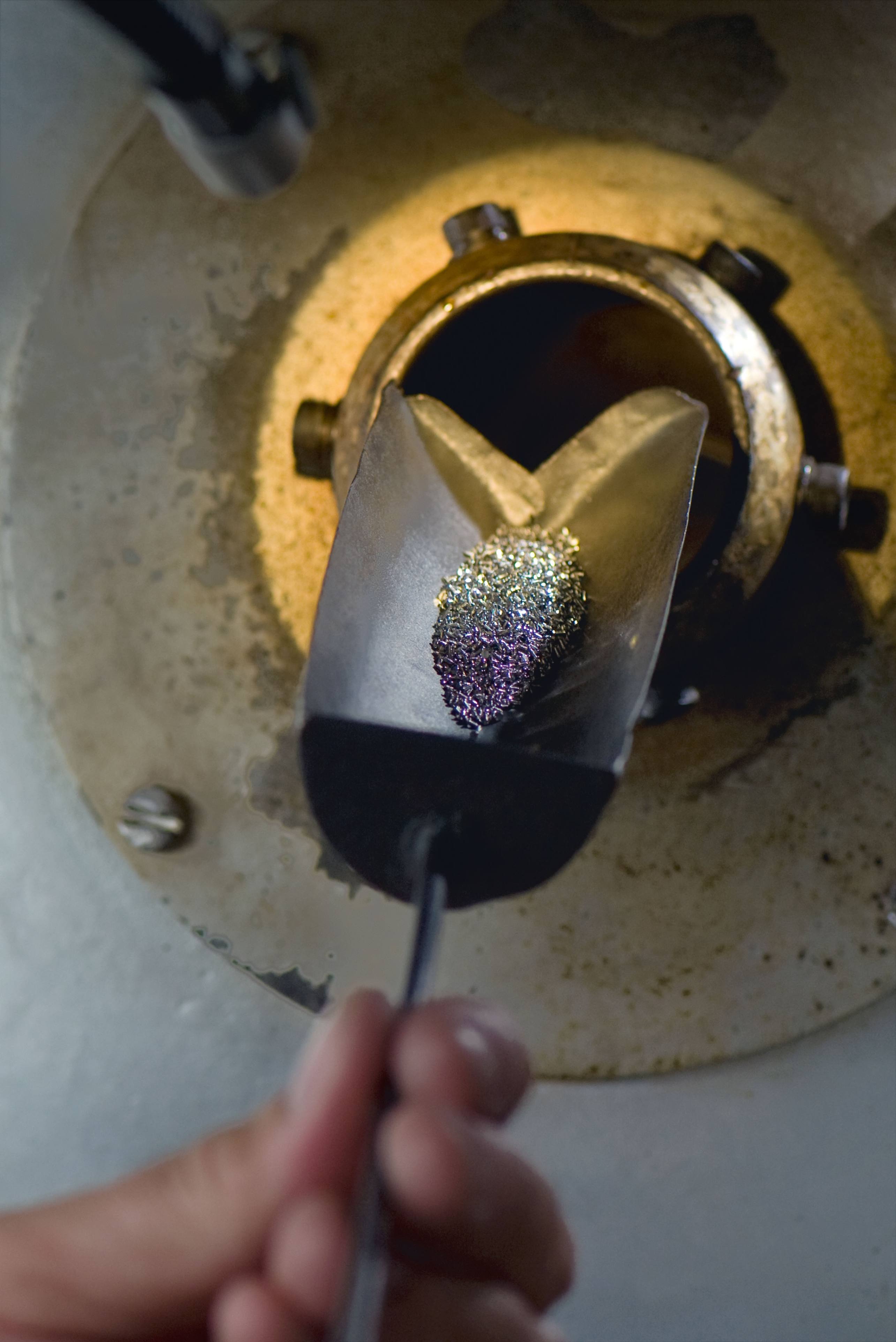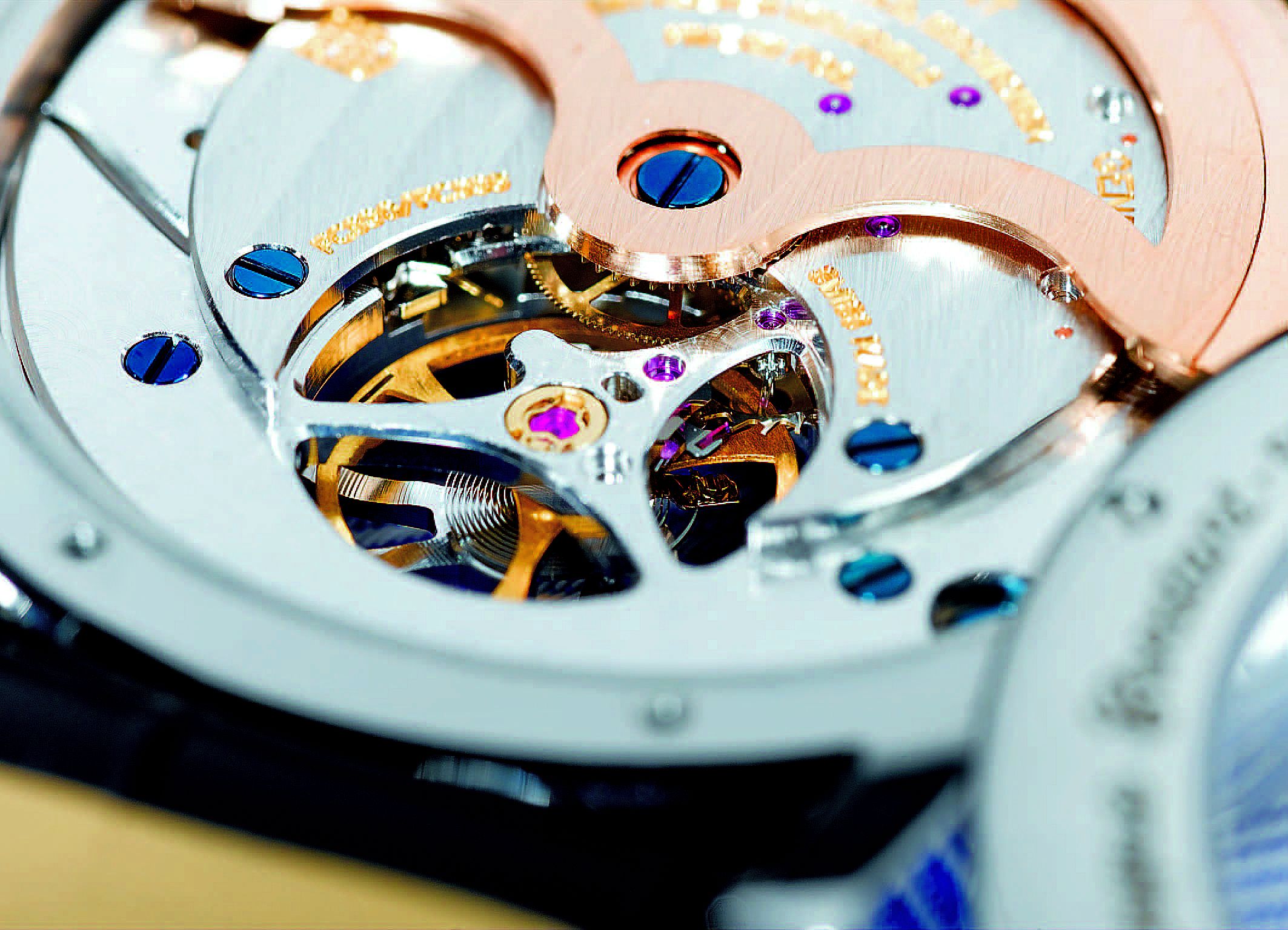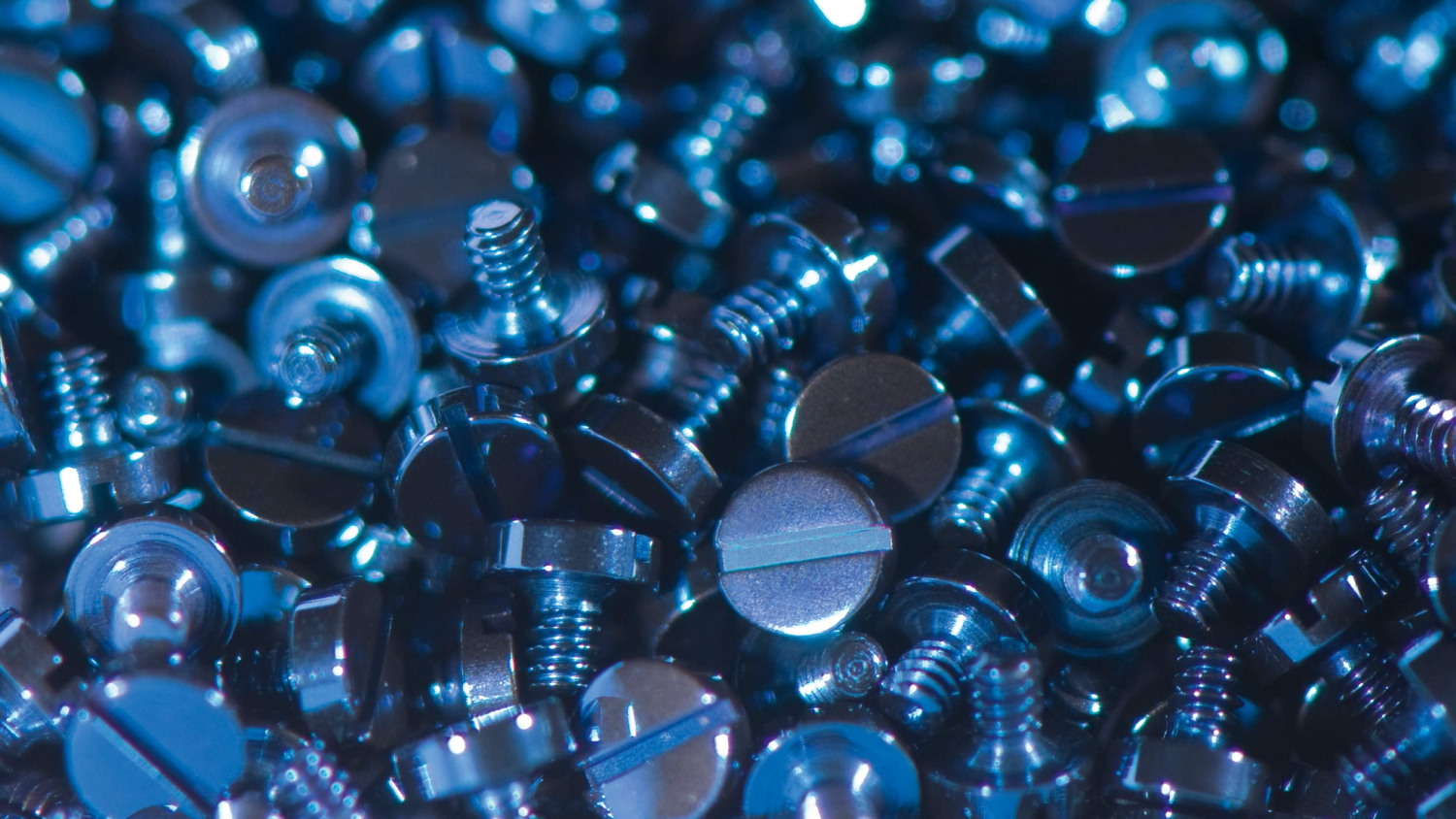Any connoisseurs of high-end timepieces consider blued screws in the movement to be an absolute necessity. However, the technology used to achieve that signature hue is still a mystery to many. There are actually two processes: one employed by large manufacturers such as Jaeger-LeCoultre, who require large quantities of blued screws, and the other used by “solo artists” such as the members of the ACHI (Horological Academy of Independent Creators), who produce only small quantities.
The first procedure uses a special, electrically heated bluing kiln that rotates several times a minute with precise temperature control. Its center is an open-ended ceramic tube with a diameter of approximately five centimetres. To produce dark blue screws, the temperature is set to 290° C (about 550° F). A few thousand tiny screws are placed in a small, steel trough — with a volume of only a few cubic centimetres — and inserted into the base of the tube. The slow revolution of the kiln ensures that the loose screws remain in continuous motion and are thus evenly exposed to the atmospheric oxygen without becoming damaged. This process creates a homogeneous, colourless film on the screws with a thickness of a few hundred nanometres. The layer is made of Fe3O4 (a type of iron oxide), which permits tempered colours or interference effects.
 Heat improves appearance:polished steel screws are placed ina special rotary kiln
Heat improves appearance:polished steel screws are placed ina special rotary kilnThe same phenomenon is seen in soap bubbles and floating oily films, with the interference of light reflecting on either the surface or the back of the film. When the thickness of the film equals exactly one-half of a certain wavelength of light, the two reflecting waves for a specific colour will disappear. The remainder of the reflecting natural or artificial light will then appear as a colour. The wavelengths of visible light range between 750 nanometres (red) to 400 nanometres (violet). Different colours can be achieved depending on the thickness of the film. A thin film will appear yellow, since the short waves of blue light will be eliminated. A thicker film will appear to be blue, because the longer waves of light are subject to the destructive interference.
In the bluing kiln the temperature is maintained at a constant 290° C and the screws initially achieve a yellowish tone. As the oxidation time increases, the colour changes to straw yellow, then to gold, brown, red, purple, violet and, finally, the desired dark blue colour. In this case the oxide film is thick enough to block out the long-wave yellow-red components of around 700 nanometres. Additional heating will cause the oxidation to produce colours such as cornflower blue, light blue and, finally, dark gray.
The duration of the heat treatment is extremely critical and can vary considerably within a period of a few hours. Depending on the size of the screws and the tolerance of the thermostat, the time required to achieve the dark blue colour may vary between nine and 13 minutes. An expert in the bluing process observes each morning’s first batch continuously, determines the correct time period for the day, and sets the alarm signal. The components must always be checked towards the end of each time period. This ensures the exact consistency of the colour tone for each and every batch.
Screws that have achieved the proper dark blue colour in the kiln — especially on the head and within the slot — are immersed in an enamel container filled with mineral oil, which stops the oxidation process immediately. This step is used by the German brand Nomos, for example. “The principle of thermal bluing is an expression of tradition, and we view it as a high-quality, decorative element,” reports Silke Schmidt-May, public relations spokesperson. She continues: “In our view, the traditional method is preferable, since bluing with heat is subject to certain criteria. Oily residues, impurities and humidity all greatly influence the final result.”
Manufacturers who blue small quantities of screws (and other steel components) for their own watch movements use a considerably different, much simpler procedure: they place the screws in brass shavings with the heads exposed, and apply heat with a gas flame until the desired blue colour is reached. The colour does not necessarily need to be the same for each batch, and the screw shaft can have a different colour than the rest of the screw since it will not be noticeable once the screw is placed in a movement.
 True blue: properly blued screws ina watch movement
True blue: properly blued screws ina watch movementA good way to control the tone is with bluing salt. This oxidizing mixture of potassium nitrate and sodium nitrate, with traces of sodium chloride, potassium chloride and sodium bromide, melts at 300° C (572° F). The salt is placed in an enamel container and melted over a gas burner. The steel components for bluing are added to the melted salt and gently stirred with the bent end of a polished steel spring. The progress of the bluing process is easier to track on a spring than on tiny screws. As soon as the desired colour tone has been achieved, the liquefied salt is poured off, and the screws are caught in a sieve, rinsed thoroughly with water and dried.
This chemical bluing, however, is not as highly regarded among manufacturers. After they are purchased, screws usually arrive with a nickel coating that is removed from the head, but not from the slot, of the screw. When the screw is dipped into the bluing salt, only the top surface acquires the blue tone, while the slot retains its nickel coating.
The German clock manufacturer Erwin Sattler in Gräfelfing, Bavaria, also prefers the higher-quality, thermal bluing process, but makes one exception: “We use bluing salt primarily for large quantities of standard screws. All of the ‘pretty’ screws — domed, beveled or flat-polished — are blued on a perforated plate over a gas flame,” explains master watchmaker Jürgen Kohler. “We use only the conventional method over a gas flame for hands, but in different variations: on a curved plate, either with or without shavings.”
Finally, the notion held by some that steel components in a movement are protected from rust by the bluing process is simply wishful thinking. Blued screws and springs rust just as quickly as untreated ones. In contrast to oxide films on aluminum, titanium or stainless steel, iron oxide films are microporous and provide virtually no protection. Oxygen and water vapor can penetrate through the oxide layer to the iron and cause rusting. A certain level of protection is offered by “black” polishing — which creates smooth, mirror-like surfaces with a minimum of roughness that gives corrosion little opportunity to attack.




